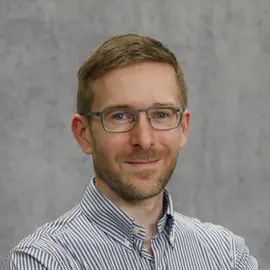Shaping Porous Electrode Architecture to Improve Current Density and Energy Efficiency in Redox Flow Batteries (SPACER)
SPACER will create high‑power‑density, low‑cost electrodes for redox‑flow batteries using hierarchical, multi‑scale structures. Multiscale modelling will guide pore design, followed by micro‑ (stereolithography), meso‑ (3D printing) and macro‑ (textile) prototyping, EPR validation, and mini‑stack tests with industrial partners.
Description
The energy transition has increased demand for energy storage, including long-duration storage solutions like redox-flow batteries (RFBs). But RFBs are limited by a high levelized cost of storage, due in part to inefficient electrode use and the lack of tailored RFB components. SPACER will develop high-power-density electrodes for RFBs, with a max. power density of ca. 1A cm^-2 and energy efficiencies >85-90% at relevant current densities (20-30% higher than conventional electrodes). The expected cost is up to 50% less than conventional electrodes. SPACER’s approach is the use of hierarchical structures, i.e. complex multilayer materials. Work will entail:
- Multiscale modelling to better understand RFB behavior and identify hierarchically shaped pore structures for optimum electrolyte and electric flow
- Prototyping of the modelled structures via stereolithic (micro-), 3D printing (meso-) and textile (macroscale) techniques
- Characterization of prototypes via cutting-edge imaging techniques like EPR to validate the models and electrode performance
Three development cycles (micro-, meso- and macroscale) will provide insight into complex interactions and optimal material structures, and culminate in electrodes validated in mini-stacks by an industrial partner. The intended applications are established (vanadium) and next-gen (HBr) RFBs.
SPACER will give 17 DCs a unique skill set spanning electrochemistry, modelling, material science and cell engineering. The employability of the DCs will be further enhanced by high-quality individual training in scientific and soft skills, and structured network training units moving them from theoretical investigations toward industrial application. The involvement of 3 industrial beneficiaries and a non-funded Industrial Board, secondments in applied research and industry, and a strong training emphasis on market needs will equip the DCs with the intersectoral skills needed for a career in electrochemical energy storage.
Key data
Projectlead
Deputy Projectlead
Project partners
Fraunhofer-Gesellschaft zur Förderung der angewandten Forschung e.V.; Chalmers University of Technology; Elestor BV; Eindhoven University of Technology TU; Universität Innsbruck; University of Padova; Universität Stuttgart; Technical University of Denmark; Universität Bayreuth; University of New South Wales; University of Queensland; Golin Wissenschaftsmanagement; University of Chemistry and Technology Prague; Pinflow energy storage, s.r.o.; Brno University of Technology; Fureho AB; AvCarb Material Solutions; E-storage Engineering srl; Volterion GmbH & Co. KG; Bruker BioSpin GmbH & Co. KG
Project status
ongoing, started 09/2025
Institute/Centre
Institute of Computational Physics (ICP)
Funding partner
Horizon Europe / Marie Skldowska-Curie Actions Doctoral Networks Marie Skłodowska-Curie Actions (MSCA)
Project budget
723'219 CHF
